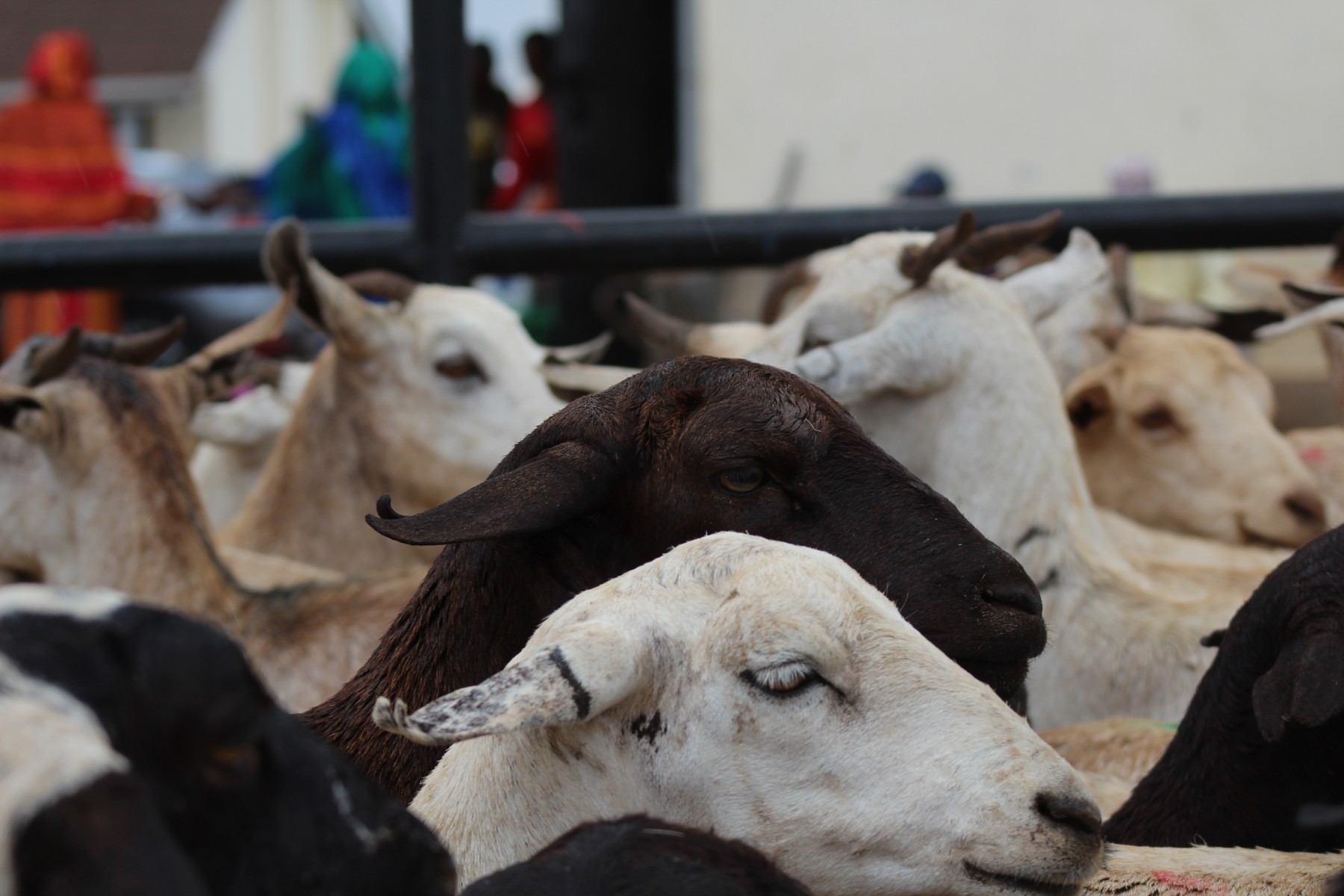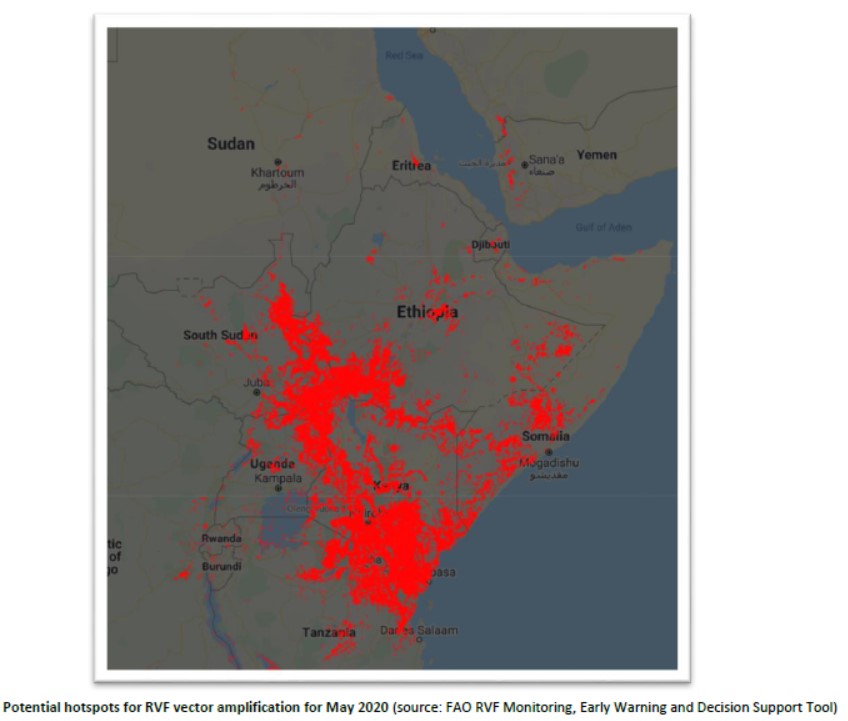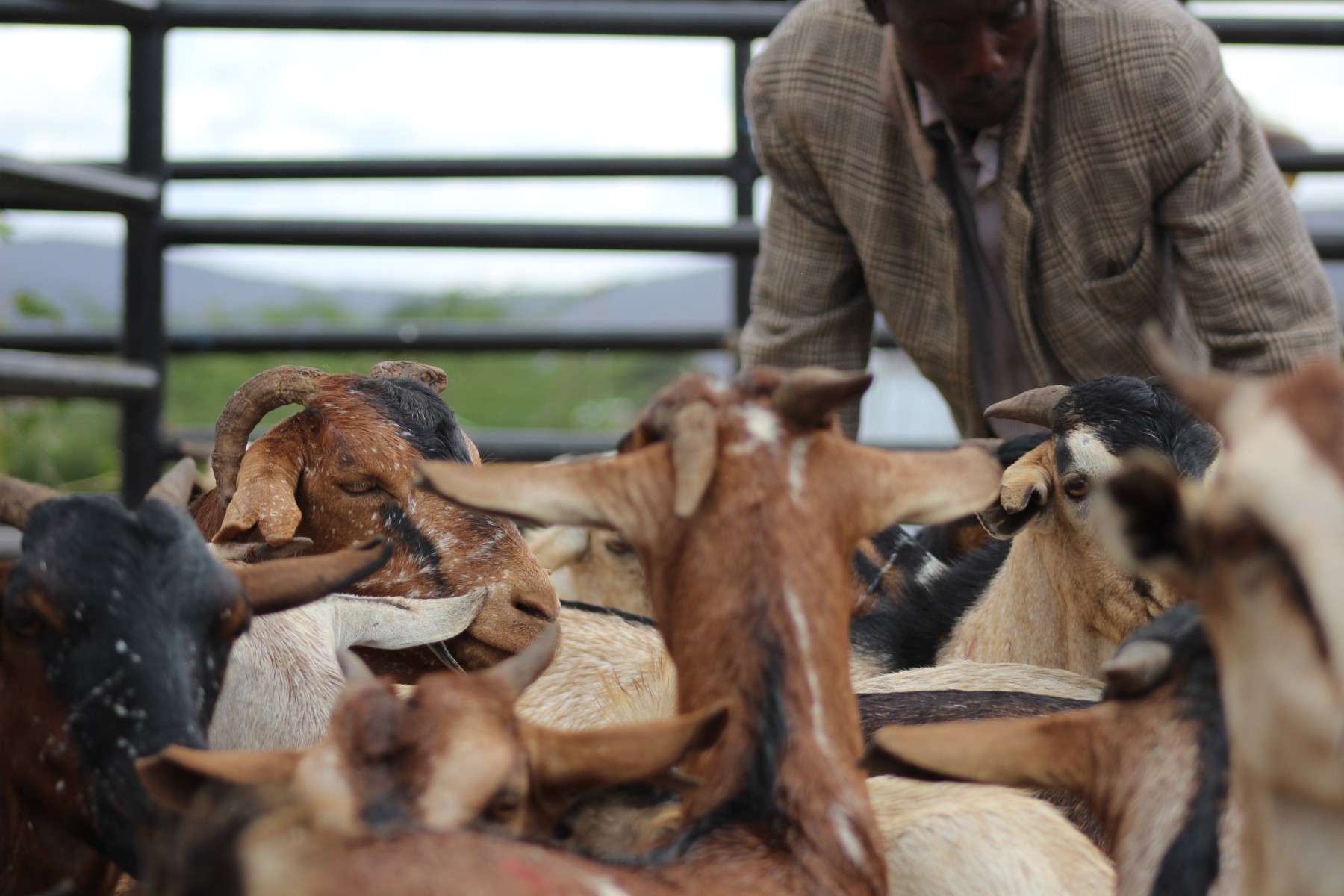



Picture © P. Bastiaensen (oie) 2019
Current and projected rainfall patterns accross the eastern Africa region may drastically increase vector populations (including Aedes species) and therefore the transmission of Rift Valley Fever (RVF), warn the UN Food and Agriculture Organization (FAO) and the Inter-Governmental Authority on Development (IGAD), the leading regional economic community in the Horn of Africa.
The Food and Agriculture Organization of the United Nations (FAO) maintains a system for RVF forecasting based on precipitation and vegetation anomalies, among other environmental factors.
During the past months, in line with the weather predictions including the IGAD Climate Prediction and Application Center (ICPAC) forecast, rainfall was persistently above-average in most of the countries in Eastern Africa. The latest FAO RVF forecasting in May 2020 (as presented below-see picture) confirms that the risk of RVF occurrence in the region remains high both in animals and humans in the next coming months, either due to favorable to environmental conditions and/or through animal movement, and calls for urgent readiness to any potential RVF outbreak, in particular through One Health coordination.



Dr Samuel Wakhusama, OIE Representative, Eastern Africa
OIE strongly supports the recommendations of FAO and IGAD that :
All pictures © P. Bastiaensen (oie) 2019
PDF - 567.75KB





